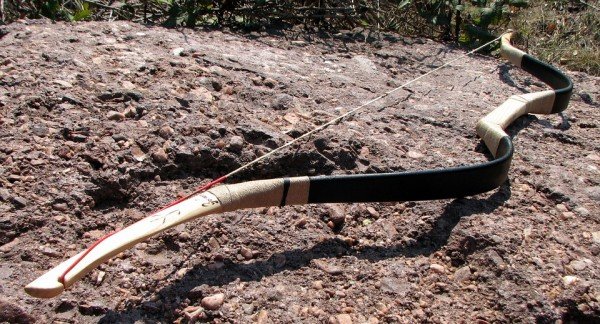If you’re a traditional bow hunter (recurve, long or primitive), there are a few things you can do to make sure you’re “dialed in” before you head out on that first hunt.
Most of us can’t wait until opening day, but hopefully you started slinging a few arrows well before the start of the bow hunting season to practice. The bow we put away at the end of last season may not be same bow we shoot this year.
When I took my bow off the shelf and strung it up a few months ago, I noticed I had a couple of broken strands. I made a replacement string and got it ready to install. As I inspected my recurve I noticed that the brace height had shrunk a whole inch since last season. This didn’t happen all at once, it happened because I didn’t pay attention to how much the string stretched over time.
RELATED: 7 Ways to Prepare for Early Season Bowhunting
When I put the new string on, set the brace height and installed my nocking point I was amazed at how much faster it shot, and it was also more quiet. I had simply gotten used to the way it shot and didn’t bother to check it throughout the season.
Another thing that’s common is to install your string upside down and then wonder why you’re flight is weird. This happened to me once when I took the string off to adjust my string silencers (beaver balls). I forgot to put a T-Square on my string to check the nocking point.
In addition to checking the brace height, you’ll want to check the nocking point. Mine was only off a quarter of an inch but it made a big difference in my accuracy. All I had to do was turn the string around and re-check. Strings do wear out so making sure you know how to do these adjustments are vital if you want your bow to perform at its best.
The brace height (the distance from the deepest part of the handle to the string) is usually between 7.5 and 9.5 inches (check the specs on your bow) and can easily be adjusted by twisting or un-twisting the string. Shoot a few arrows when you think you have it close and adjust from there. A few twists can make a big difference.
Checking the nocking point is easy. Square the string to the arrow rest (you don’t need to buy a fancy bow square, a T-Square works just fine) and check to make sure it’s about a half an inch above 90 degrees. In other words, when you nock in an arrow, the tip will point a little bit down. You’ll never see it but it makes a big difference in how the arrow flies.
Checking both of those adjustments before you tune your shot up will keep you on target. Don’t forget that a new string will stretch so it’s important to check regularly. It only takes a few minutes and sometimes you can’t see subtle changes with your eyes. Also if you’re using a primitive bow, the actual bow will change over time too. Don’t take last years adjustments for granted because they will change. Good luck!
h/t Bowhunter.com








